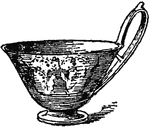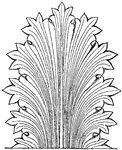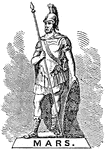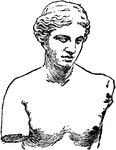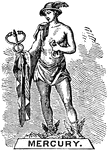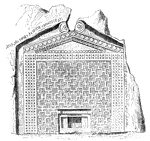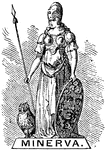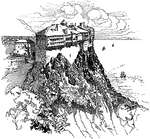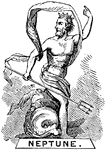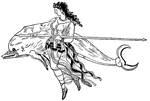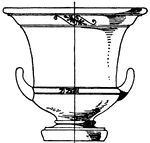
Greek Krater
This Greek krater is a type of antique vase that was typically used for mixing water and wine.
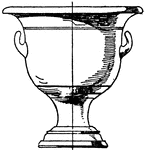
Greek Krater
This Greek krater is a type of antique vase that was typically used for mixing water and wine.
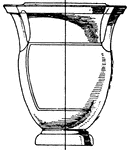
Greek Krater
This Greek krater has columnar handles. Its a type of antique vase that was typically used for mixing…
The Labarum
"The Labarum consisted of a staff or lance with a purple banner on a crossbar. It bore the two Greek…
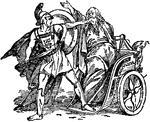
Death of Laius
"When grown up, Oedipus is told by the oracle that he would slay his father and marry his mother. On…

Greek Lekythos
This Greek Lekythos is made of red clay and painted in black. The form is elongated and cylindrical,…

Greek Lekythos
This Greek Lekythos is made of red clay and painted in black. The form is elongated and cylindrical,…
Greek Lekythos
This Greek Lekythos is made of red clay and painted in black. The form is elongated and cylindrical,…

Greek Lekythos
This Greek Lekythos is made of red clay and painted in black. The form is elongated and cylindrical,…

Greek Lekythos
This Greek Lekythos is made of red clay and painted in black. The form is elongated and cylindrical,…

Greek Lekythos
This Greek Lekythos is made of red clay and painted in black. The form is elongated and cylindrical,…

Greek Lekythos
This Greek Lekythos is painted in black and white. The form is elongated and cylindrical, while the…

Greek Lekythos
This Greek Lekythos has an attic style. The form is elongated and cylindrical, while the neck is long…

Greek Lekythos
This Greek Lekythos has an attic style. The form is elongated and cylindrical, while the neck is long…

Greek Lekythos
This Greek Lekythos is made of red clay and painted in black. The form is elongated and cylindrical,…

Greek Lekythos
This Greek Lekythos is made of red clay and painted in black. The form is elongated and cylindrical,…

Greek Lekythos
This Greek Lekythos is made of red clay and painted in black. The form is elongated and cylindrical,…

Greek Lekythos
This Greek Lekythos is painted in black and white. The form is elongated and cylindrical, while the…
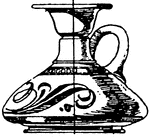
Greek Lekythos
This Greek Lekythos has an elongated and cylindrical form with a long neck. Its a type of Greek pottery…
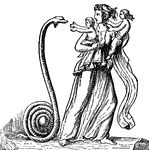
Leto or Latona
"The persecution which Latona experienced from Juno is alluded to in the story. The tradition was that…
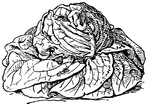
Cabbage Lettuce
Cabbage Lettuce is distinguished by its broad leaves and low spreading habit. It is an annual plant,…

External Margin Link Border
The external margin link border is found on the outside of a Greek kylix or wine-drinking cup. It is…

Greek Cyma Link Border
The Greek Cyma Link Border is a design found between the ceiling and the wall. It is a scroll design…

Greek Hydria Link Border
The Greek hydria link border is a design found on the outside of a Greek pottery used for carrying water.…

Litmus
"This instrument was long, and curved at the end. From the similarity of form the original staff received…
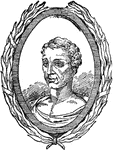
Lucian
"Lucian, the humorous satirist, was a native of Samosata, in Syria, and flourished towards the end of…

Lyre
A stringed musical instrument well known for its use in Classical Antiquity. The recitations of the…
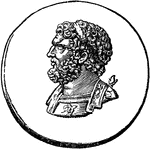
Philip of Macedon
Philip became king of Macedonia in 359 B.C. He was viewed as he best educated man of his time.
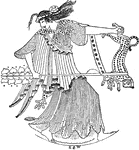
Maenads
In Greek mythology, Maenads were the female followers of Dionysus, the most significant members of the…
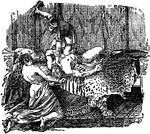
Man with ax
"Who brandishing aloft the ax of doom, That just has laid one victim at her feet, Looks round her for…

The Mound at Marathon
"Near the southern extremity of the plain of Marathon rises a conical mound, 30 feet high. it covers…
Comedy masks
"While Greek tragedt grew farther and farther away from the humor and burlesque so characteristic of…
Tragedy masks
"Tragedy masks. The origin of Greek drama is to be found in the yearly celebrations in honor of Dionysus,…
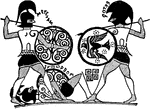
Aryan Speaking People, Menclaus and Hector
Combat between Menclaus and Hector, Aryan Speaking people. Greek writing was just beginning therefore…
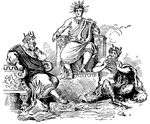
Midas
"Bacchus offered Midas his choice of a reward, whatever he might wish. He asked that whatever he might…
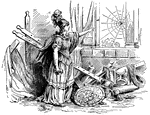
Minerva
"On Minerva's side Varro tells us that Cecrops found an olive tree and a fountain, and that on consulting…

Thesus and the Minotaur
"Thesus and the Minotaur. (From a vase-painting in the Vatican Museum.) — The Delphian Society,…
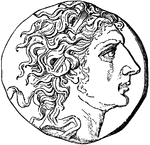
Mithradates VI Coin
An illustration of Mithradates VI on the face of a coin. Mithradates VI was king of Pontus in northern…

Leaf Enrichment Moulding
The leaf enrichment moulding is a design found in Erechtheum, Athens an ancient Greek Temple.
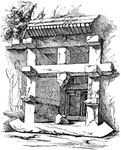
Tomb at Myra
"The second class, those cut in the rock, have either sculptured facades, or a kind of frame standing…
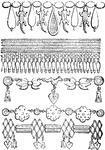
Ancient necklaces
"The following, also, are specimens of other ancient necklances. The first, small golden lizards alternate…

Temple of Neptune
"Paestum, the Greek Poseidonia, was a colony of Sybaris. The malarial atmosphere of the place led to…
